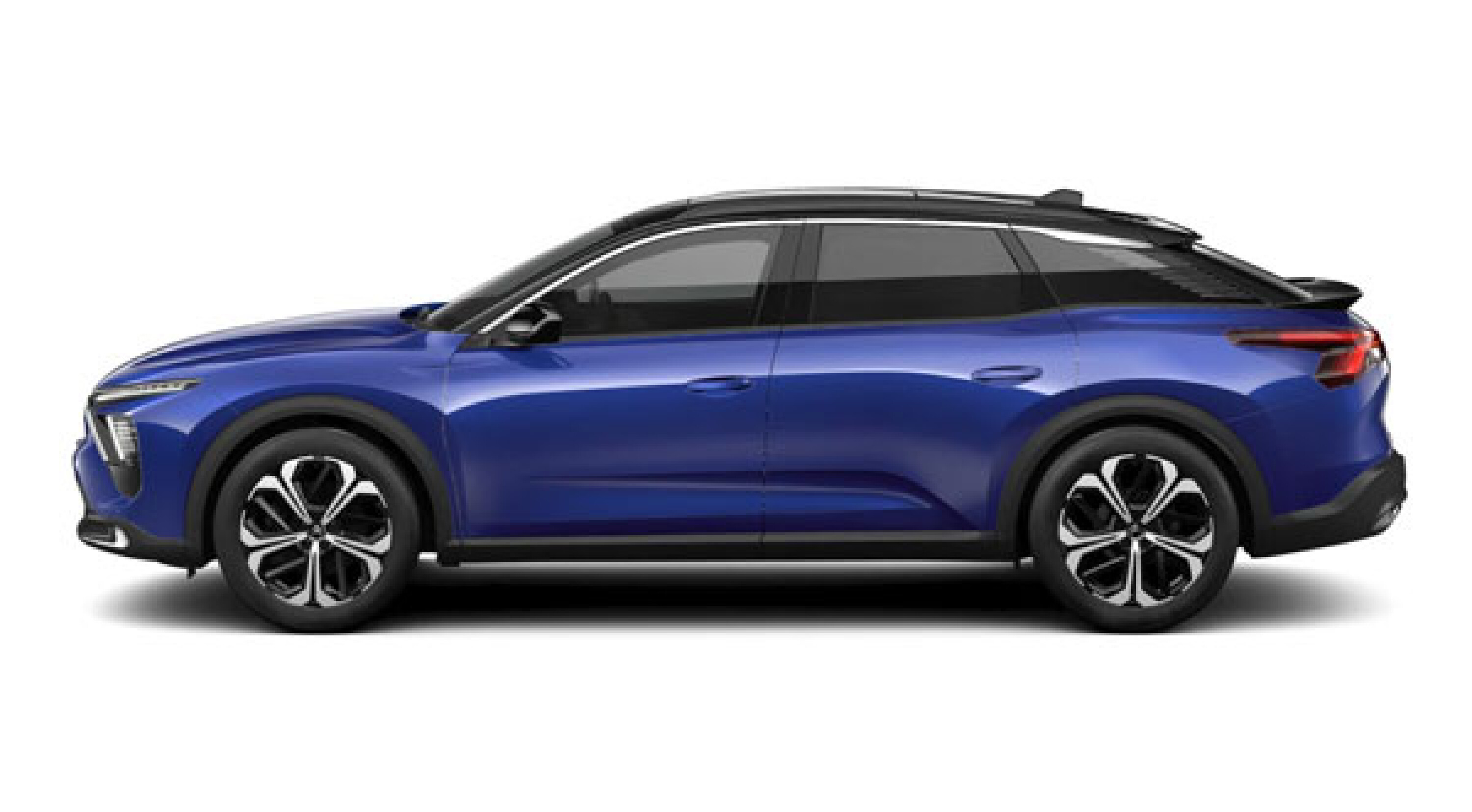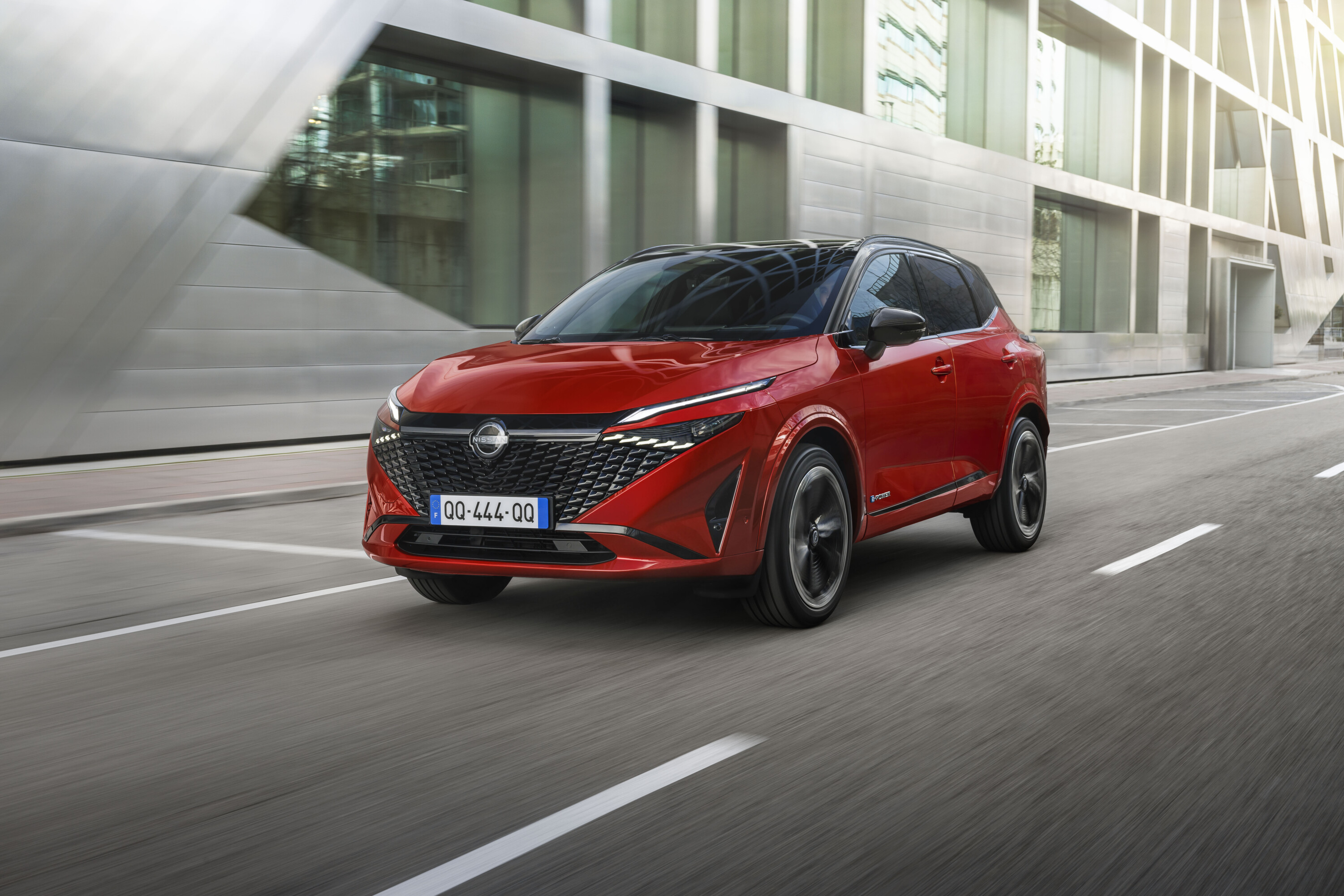
Australians buy more SUVs than any other type of vehicle; and within the showroom shootout, it’s Medium SUVs that outsell the rest.
While petrol power still dominates (but is on the decline), sales of hybrid vehicles were up 88% in July 2024 compared to the same time last year! PHEV sales also grew from 965 (July 2023) to 2209 (July 2024), an increase of 1244 sales or +128.9 per cent.
So, here are the plug-in hybrids set for local showrooms in 2024 and beyond ?

Jump Ahead
- Citroen C5 X Plug-in Hybrid
- Jeep Compass 4xe
- Jeep Compass eHybrid
- Hyundai Tucson Hybrid
- Mazda CX-5 PHEV
- MG HS PHEV
- Nissan Qashqai e-Power
- Mercedes-AMG GLC63 S E
- Volkswagen Tiguan eHybrid

Citroen C5 X PHEV
Part sedan, part wagon, part SUV – the C5 X plug-in hybrid was confirmed for Australia when the petrol version arrived here in late 2022 and will be in local showrooms before the end of 2024.
The ‘avant-garde’ body design sits on a 2785mm wheelbase for a 545L boot area in petrol versions – expandable to 1640L to the roof with the rear seats folded – but based on overseas specs, the hybrid unit reduces that by 60 litres.
It uses the same 133kW/250Nm 1.6-litre four-cylinder petrol engine eight-speed auto but adds an 80kW electric motor and 11.9kWh battery – with a 50km range under electric power.

Hyundai Tucson Hybrid
What does the Hyundai Tucson have in common with the Porsche 911? Both are getting hybrid models as part of a mid-life facelift.
The mid-size Tucson will use the same 1.6-litre turbocharged four-cylinder petrol engine and electric motor package to take on the dominant Toyota RAV4 Hybrid in the showroom shootout.
Hyundai Australia is yet to confirm which trim levels the hybrid will be offered on, with front- and all-wheel drive versions available overseas, with a best official combined fuel number of 5.9L/100km for the front-drive model.
Fingers crossed it comes on the new N-Line trim level announced with the new model which arrives in the third quarter of 2024.

Jeep Compass 4xe
The Jeep Compass 4xe (pronounced “four times e”) adds a proper plug-in hybrid alongside the mild hybrid Compass.
The all-wheel drive 4xe plug-in hybrid combines a 1.3-litre turbocharged four-cylinder petrol engine with six-speed auto and electric motor for a 176kW/270Nm combined output.
Electric only range from the 11.4kWh battery is a (very specific) claimed 43.7 km, fuel economy of 2.1L/100km and the same cabin space as the mild-hybrid (badged the Compass ‘eHybrid’).
Its 483L boot space is considerably smaller than many rivals’ including the Ford Escape PHEV (566L), but on par with the Mitsubishi Outlander PHEV’s 478L.
With arrivals “late this year (2024)”, two equipment levels have been confirmed for Australia – the Limited and Summit – priced at $61,990 and $69,990 before on-road costs respectively.

Jeep Compass eHybrid
The new Compass eHybrid is a ‘mild hybrid’ sits below the plug-in Compass 4xe, with both due in local showrooms by the end of 2024.
The front-wheel drive Compass eHybrid – denoted ‘eTorque’ badging – doesn’t have an electric motor, but uses a 48V battery pack for low-speed driving such as parking. The rest of the time it relies on its 96kW/240Nm 1.5-litre four-cylinder petrol engine and 7-speed dual-clutch transmission. Fuel economy is a claimed 5.1L/100km with the same cargo space as both the 4Xe and
Jeep Australia has confirmed the eHybrid Limited will be $45,990 plus on-road costs with the eHybrid Summit $54,990.

Mazda CX-5 PHEV
The next CX-5 is a landmark vehicle for Mazda Australia as the second generation of its best seller will include a plug-in hybrid EV for the first time.
In a bold move, it won’t be Toyota-powered despite a tie-up between the companies, with Toyota owning a five percent stake in Mazda. The CX-50 SUV, sold in China and the US, uses the Toyota RAV4 hybrid powertrain, but the next CX-5 will instead use the first in-house Mazda-developed plug-in set-up.
That’s all Mazda has confirmed for now, with scant information on the hybrid set-up, so watch this space as the CX-5 hybrid inches closer to Australian showrooms – and driveways.

Mercedes-AMG GLC63 S E
Ditching V8 power after decades of guttural, grunty engines continues at AMG, with the flagship performance GLC S E Performance SUV now a hi-po hybrid.
Running a 350kW 2.0-litre four-cylinder turbocharged petrol engine with a battery pack and pair of 75kW electric motors delivers a healthy 500kW total, and while there’s 2.3 tonnes to move, our first drive overseas found it was more agile and talented than the stats suggest.
Somewhat a technological wonder, it’s pricey, though, starting at $192,900 (or $199,500 for the Coupe). It’s on sale now.

MG HS PHEV
Booked in for its Australian debut by the end of 2024, the MG HS is an all-new generation based on the Chinese-market Roewe RX5.
Dubbed eRX5 in plug-in hybrid from, the donor model brings the same size 1.5-litre turbocharged petrol engine as the outgoing HS PHEV, but brings more power and torque with a bigger battery wrapped in a more contemporary design.
That sees the petrol engine’s 138kW/300Nm boosted by a 180kW/270Nm electric motor and 12.3kWh battery, but there 2765mm wheelbase – an increase of 40mm – brings more to move. That sees electric only range fall from 63km to 50km in what appears to be one of few downsides of the model.
We’ll know for sure when official specs are announced ahead of it local launch later this year.

Nissan Qashqai e-Power
The most fuel-efficient Qashqai arrives in Australia as Nissan’s second ‘e-Power’ model after the larger X-Trail e-Power introduced the tech here in 2022.
Australian arrivals are set for Q4 2024 with a single Ti e-Power spec priced at $51,590 before on roads – $3200 above the non-hybrid Qashqai Ti
The Qashqai e-Power follows the same set-up, whereby its 140kW/330Nm electric motor is the sole source of drive to the (front) wheels, with its 2.1kWh battery topped up by the generator – a 1.5-litre three-cylinder petrol engine.
A claimed combined 5.2L/100km compares to 6.1L/100km for petrol-powered Qashqai, while bringing a 23-litre larger boot with its second row in place.

Volkswagen Tiguan eHybrid
The third-generation Tiguan is due to arrive in Australia in 2025 and is likely to see a plug-in hybrid model as part of the local line-up.
Australia missed out on the PHEV with the previous Tiguan, but the local arm has expressed a keen interest in the 2025 Tiguan eHybrid in place of diesel powertrains.
Sharing the Golf’s MQB Evo platform, the pluggy Tiggy also uses the same 1.5-litre turbocharged four-cylinder petrol engine and electric motor – sold overseas in 150kW and 200kW outputs – and 19.7kWh battery, with a claimed electric only range of up to 120km.



